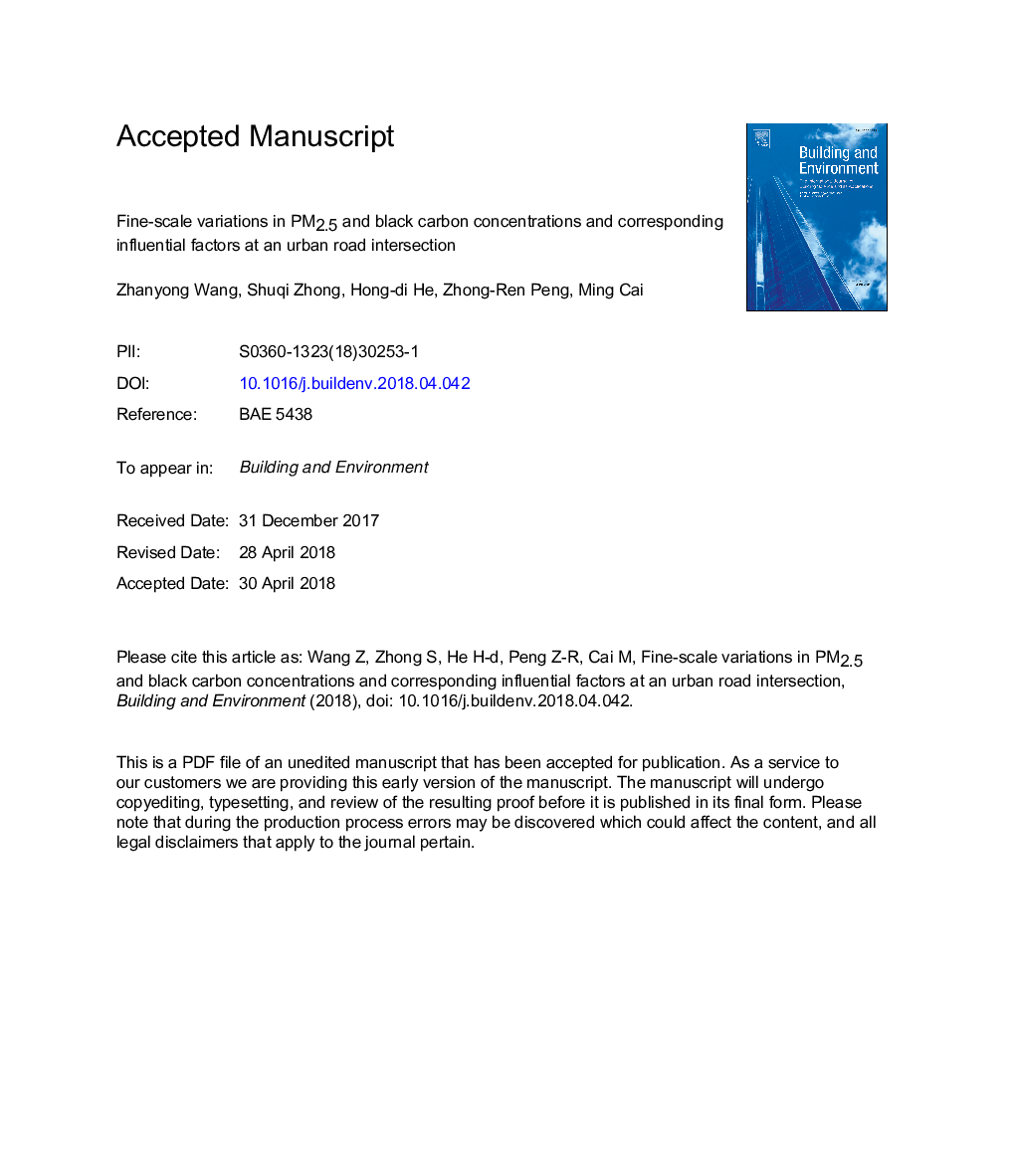| Article ID | Journal | Published Year | Pages | File Type |
|---|---|---|---|---|
| 6696994 | Building and Environment | 2018 | 32 Pages |
Abstract
Road intersections have the potential to pose an additional exposure risk to surrounding dwellers or commuters; however, knowledge of fine-scale variations of traffic pollutants especially PM2.5 and black carbon (BC) remains limited. To investigate them, we conducted a three-point synchronous observation at an intersection in Shanghai in winter and spring. Real-time monitors with one-minute intervals were used to obtain the pollutant and meteorological data while gasoline and diesel vehicle volumes were manually collected every five minutes. Observational results showed that the average PM2.5 on the downwind roadside increased by approximately 9% in both seasons and that the average BC increased by 70% in winter and 97% in spring compared to those of the local background site. PM2.5 displayed a similar diurnal variation among the three sites at the intersection, but in contrast to PM2.5, the BC variation was more strongly correlated to the diurnal traffic cycle. Generalized additive models further identified the background variation as the major contributor to the variations in both pollutants at the intersection, explaining 77-99% and 33-43% of the variance in ln(PM2.5) and ln(BC), respectively. Air pressure and solar radiation were the next top determinants of pollutant variations. Relative humidity combined with air temperature in winter and with dew-point temperature in spring also had a significant impact. Roadside BC was sensitive to traffic from the windward direction, while PM2.5 was mostly influenced by the external pollution driven by westerly winds. In contrast to gasoline vehicles, diesel vehicles were verified to provide an appreciable contribution of approximately 9% to roadside BC variations in spring.
Related Topics
Physical Sciences and Engineering
Energy
Renewable Energy, Sustainability and the Environment
Authors
Zhanyong Wang, Shuqi Zhong, Hong-di He, Zhong-Ren Peng, Ming Cai,
